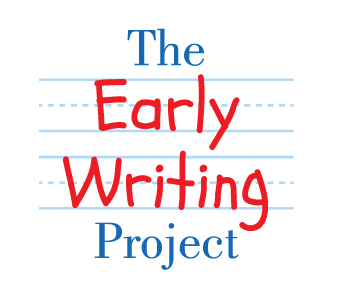Young students learning to write may face some common challenges—constructing sentences that express ideas, translating thoughts and ideas into words, and revising errors in spelling or grammar. Often, students struggling with writing proficiency are placed for small-group instruction or given an individualized learning plan. Without the proper resources, it can be hard for educators to tailor instruction to different students’ specific needs.
 Educational psychology professor Kristen McMaster’s work focuses on this very issue. She is principal investigator for the Early Writing Project, which gives educators tools and ongoing support—in the form of professional development and coaching—to implement data-based writing instruction with first- through third-grade students. A collaboration between the University of Minnesota and the University of Missouri since 2013, the project aims to support special education teachers and interventionists working with early writers who need intensive support.
Educational psychology professor Kristen McMaster’s work focuses on this very issue. She is principal investigator for the Early Writing Project, which gives educators tools and ongoing support—in the form of professional development and coaching—to implement data-based writing instruction with first- through third-grade students. A collaboration between the University of Minnesota and the University of Missouri since 2013, the project aims to support special education teachers and interventionists working with early writers who need intensive support.
Teachers involved with the Early Writing Project get online access to downloadable resources like mini-lessons, assessments, and guides for using classroom data. A special education teacher in charge of a student’s intervention can use Early Writing Project materials to track progress, assess growth, and make instructional changes in efficient and effective ways.
Distribution makes the difference
McMaster knew the Early Writing Project had high-quality resources that deserved a wider reach. She had exchanged ideas with Educational Technology Innovations (ETI), a start-up team based in CEHD, before it launched in 2015. McMaster wanted a better way to disseminate information to teachers, and ETI knew how to help. Their missions aligned, McMaster says, and she looked for opportunities to work together.
When McMaster applied for a grant to test the efficacy of the Early Writing Project tools and supports on a larger scale, she wrote ETI into the proposal. That would guarantee funding to develop the Early Writing Project’s web platform.
Including ETI in the application gave the Early Writing Project a modern dissemination mechanism, which likely gave a competitive edge in the grant process, according to ETI director Ryan Warren. Funders like to know that researchers have a plan in place for distributing results and resources. Too often, Warren says, the quality of researchers’ platforms don’t match the quality of the actual research, and discoveries aren’t getting to the people who need it most.
“We can create dissemination platforms to assure that our discoveries are making a difference,” he says.
McMaster got the grant. Now she is principal investigator on a four-year study examining the efficacy of the Early Writing Project tools and supports, along with her Missouri collaborator Erica Lembke, PhD ’03. Outcomes from Minnesota and Missouri teachers using the Early Writing Project’s resources are compared with teachers in a control group. When their yearlong cohort of the study is over, all teachers gain access to the project’s resources.
The process will repeat three times with three different cohorts of between 40 and 50 teachers. With each new year, McMaster aims to grow the wider community of educators interested in the project’s methods.
And ETI is playing a key role.
Building a positive experience
McMaster has three main goals for the website: to make it easier for teachers in the study to access the relevant materials, to use the new website to recruit new study participants, and to plan for wider distribution to many more educators in the future.
ETI modernized the look and feel of the Early Writing Project’s branding with a new logo and website design. They built an online structure to accommodate the project’s wealth of materials and make the site easier for teachers to use.
Throughout their partnership, McMaster says ETI worked hard to understand the project’s specific needs.
“They’re designed to support researchers like us,” says McMaster. “I’ve been really impressed by the way we’ve been part of the process the whole time.”
The website went through two rounds of testing before its release in early October. The study will continue for three more years, and ETI is on board for all of it.
As the study moves forward and their distribution base grows larger, Warren expects the new website to make the process smoother for the researchers and their educator partners.
The teachers will have a much more positive experience with the website,” says Warren. “Both sides will have a much better time doing the work that they need to do.”
Learn more about the Early Writing Project.
Story by Ellen Fee | Photos by Shutterstock, courtesy of ETI | Winter 2019

